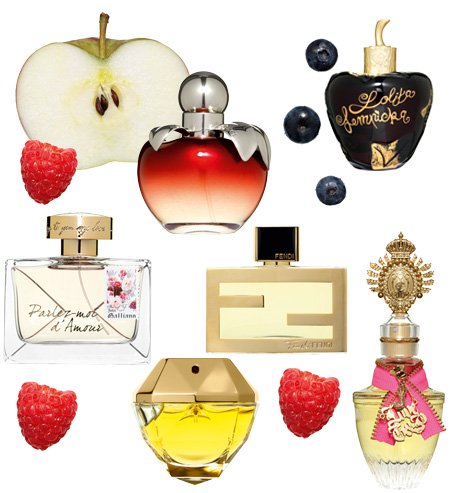News-

SCROLL

SCROLL

Talk given 7 October 2014 by Nicolas Olczyk (Rouge Curacao), and given again on 10 February 2015.
The Société des Amis de l’Osmothèque held a talk in 2014 titled, “Perfume to the Test of the 5 Senses.” Nicolas Olczyk analyzed the strong relationship between smell and taste.
The gourmand theme is still very strong in perfumery. At the Victoires de la Beauté awards, prizes were given to a cotton-candy shower gel, banana cosmetic oil, and a caramel and argan mask. The winning perfume was Repetto (fruity, vanilla). But to limit oneself just to sweetness is simplistic. The current interest in cuisine is a very strong trend, in fact. Nicolas recommends reading the special issue of Courrier International called “Gastronomy, the planet’s new religion.”
1 – Strong links exist between taste and smell…
So do strong differences. The jobs are similar but the aroma specialist tries to reproduce nature as closely as possible, and the perfumer seeks to move away from it. Nicolas presented “Aromafork ”: it’s a porous fork, with a pipette that makes it possible to insert a perfume into it that will mislead the taste buds. He also presented another strange thing: ingestible products that make it possible to perfume the skin. The Japanese offer chewing gum or gels you can swallow (like Oenobiols) that enable you to smell good. The scented ingredient traverses the skin and becomes an aroma-cosmetic product. The artist Lucy McRae came up with a dreamlike video where the perfume to ingest interacted with the body. The act of ingesting became the cosmetic. As a reminder, in 1370, Elisabeth wore perfume and drank her “Eau de la Reine de Hongrie” (with rosemary). In the same way, Napoleon rubbed himself and drank his famous Eau de Cologne.
2 – Angel, forerunner of gourmand perfumes
In 1992, Angel gave birth to the oriental-gourmand fragrance family. Today the fragrance has many more modern competitors. In spring 2014, Angel Eau Sucrée was launched accompanied by an éclair and sold for three weeks at Fauchon.
The talk also taught us that prior to Angel, other gourmand incursions into perfumes had been made.
3 – Fruitful exchanges between cuisine and perfumery
In 2012, Lancôme’s La Vie est Belle and Guerlain’s La Petite Robe Noire (cherry notes) re-launched the gourmand trend. Among the new sweet fragrances are: Lolita Lempicka’s Sweet (cherry-cocoa notes), Viktor & Rolf’s Bonbon (floral, fruity, caramel), Yves Saint Laurent’s Black Opium (coffee top notes), and also Kenzo’s Jeu d’Amour and Cacharel’s Anaïs Anaïs Premier Délice.
Men also like gourmand notes. A few recent examples are Guerlain’s L’Homme Idéal (almond), Diesel’s Only the Brave Wild (coconut), Kenzo Homme Night (mango and coconut effect). The gruity-gourmand trend is intensified for deodorants and shower gels, where coconut had already met with a certain success among men (eg: Tahiti). But a study by Marmiton concludes that men prefer to cook with salt rather than sugar.
Signs of the renewed link between taste and smell, partner projects between cooks, pastry makers and perfumers are in style. Pierre Hermé and Jean-Michel Duriez, Rochas perfumer, published a recipe book called Au cœur du goût (in it you’ll find peach pie, for example, with rose and cumin, inspired by the Rochas fragrance Femme). Anne-Sophie Pic also created menus with Philippe Bousseton of Takasago. There have also been exchanges between perfumers, sommeliers and cocktail maestros. These joint efforts stimulate the creativity of both brands and perfumers.
In fact some harmonies of flavor inspire perfumers. In 2013, the meeting between Jean-Claude Ellena and chef Olivier Roellinger resulted in Hermès’s Epice Marine: there’s no sugar, but lots of savor.
4. New trends
Current trends claim that “less sugar” has resulted in perfumes based on vanilla that’s not very sweet, such as Le Labo Vanille 44 (Alberto Morillas). Cartier’s L’Heure Défendue, was composed by Mathilde Laurent based on bitter chocolate. Gourmand notes are giving way to gourmet savors.
Consumers want new notes. Fruit must be rethought, working with cooked fruit or notes used not very often, such as grape. Vegetables should perhaps be used more. Pumpkin for example is found in the US in scented body care lines.
Cuisine is also a source of inspiration. At IFF, Domitille Bertier has worked with edamame, which is used in Japanese cuisine (they are still green, unripe soy beans that are popular as aperitifs and side dishes) for B. Balenciaga. Its harmony of floral, musky, woody, green notes is magnificent. Its success is to be underlined because it is difficult to launch creative “salty” notes that are wearable: the highlighting of the caviar note in Mugler’s Womanity, for example, was not convincing.
Some major perfume companies are pushing their perfumers to seek creative marriages. Givaudan has made its perfumers work on vetiver. Nicolas introduced us to the Haitian “Akasan” notes of Shyamala Maisondieu, which could inspire a men’s gourmand fragrance.
It would also be interesting to do more partner projects with aromaticians and perfumers. Nicolas presented us with a tiramisu accord (café, chocolate, liqueur), adapted from an aromatic food formula slightly reworked using vanilla and benzoin notes. The result was very segmenting for a perfume. Maybe it would work as a home scent?
Unlike with the gourmand theme, which bloggers at times criticize, the meeting between taste and smell, in the end, nourishes perfumers’ inspiration.
Caroline de la Taille
Nicolas Olczyk’s blog: www.parfums-tendances-inspirations.com